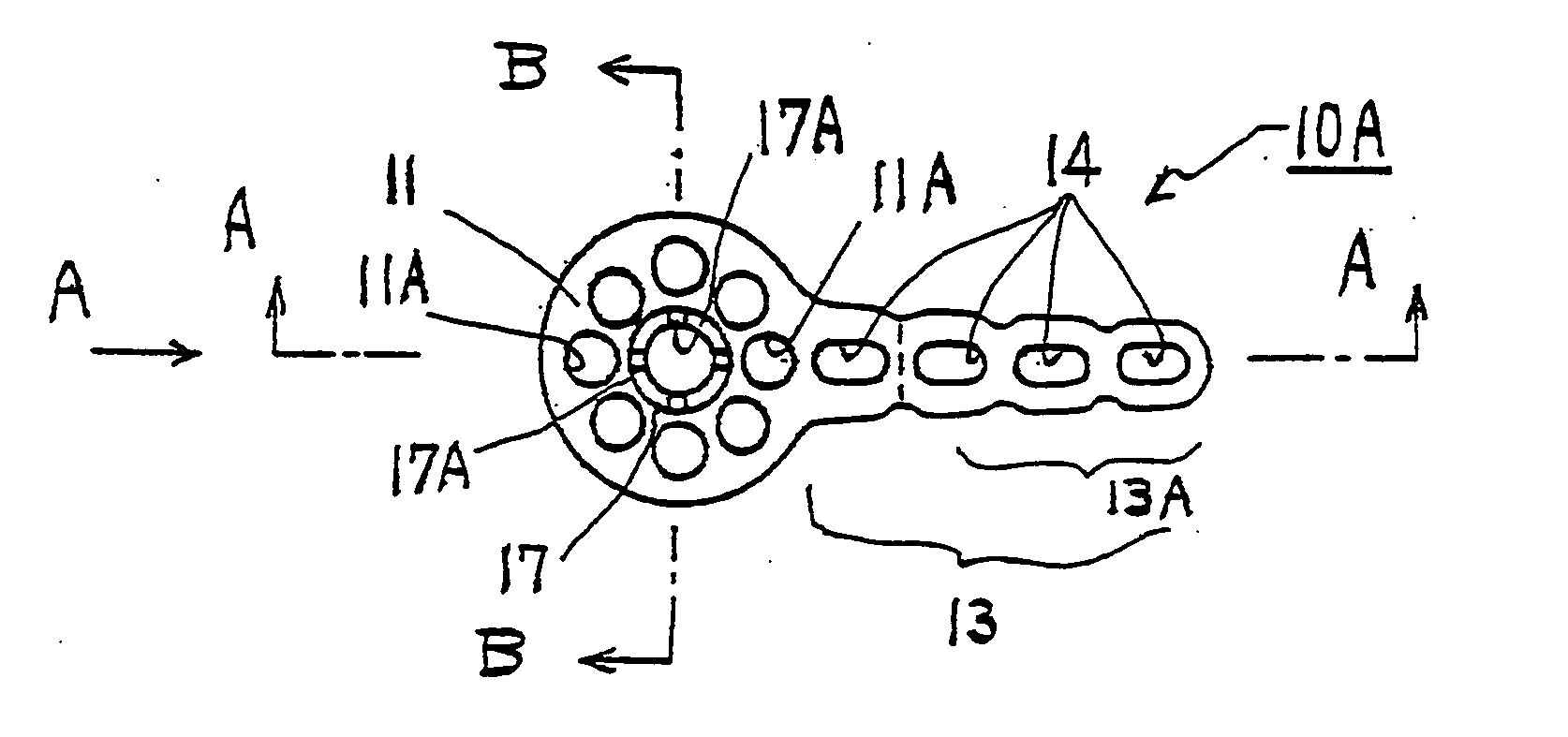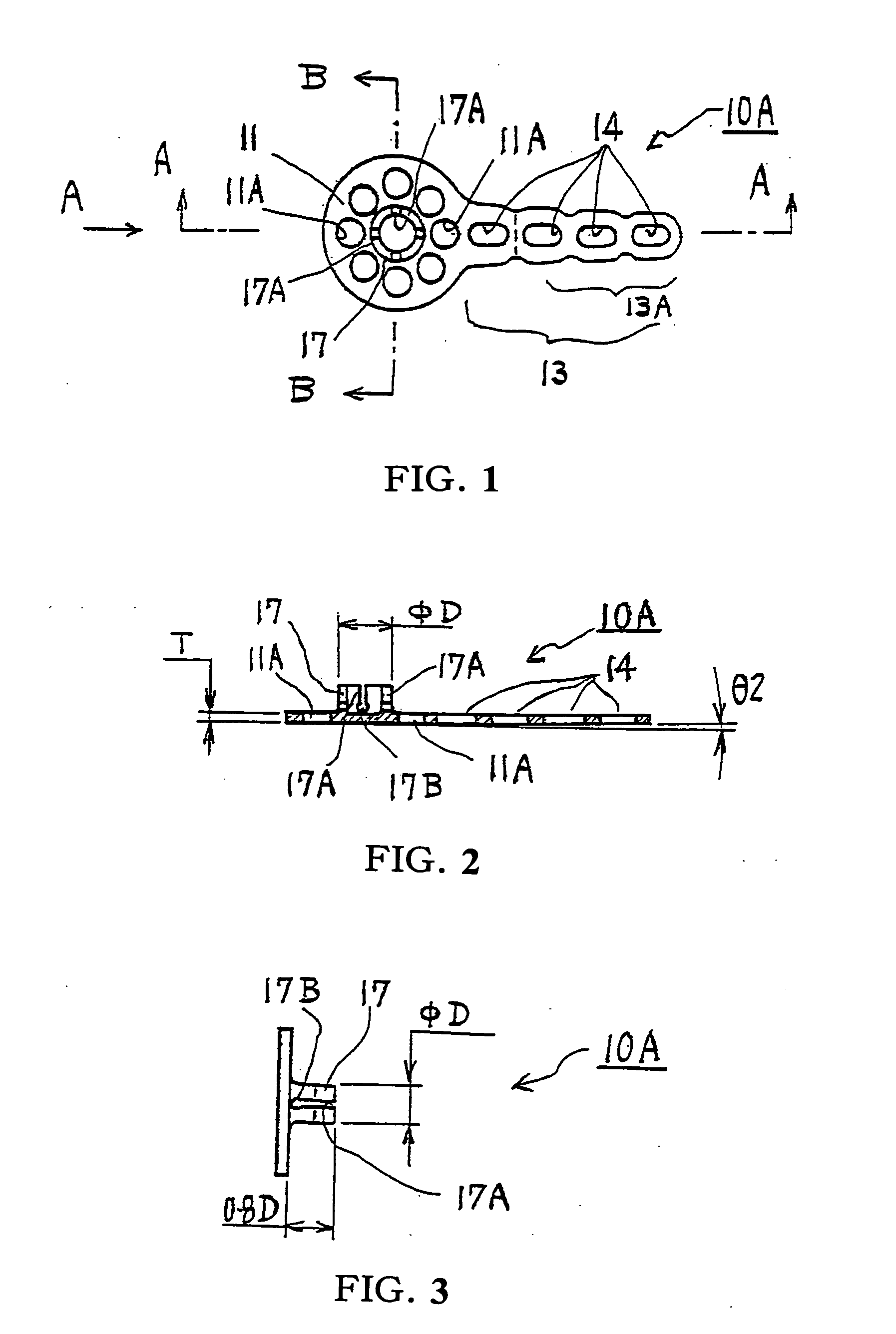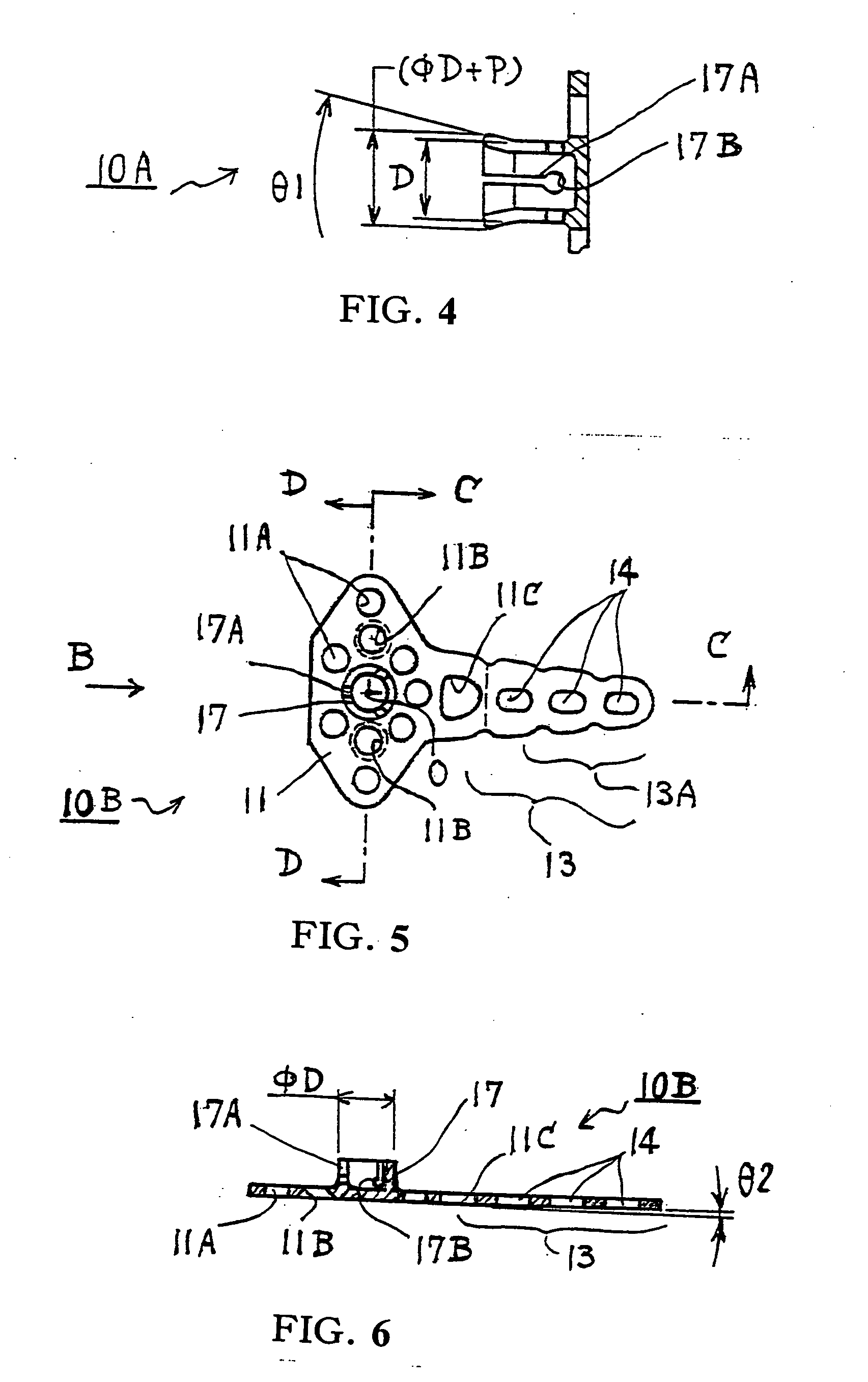Orthodontic anchor
a technology for orthodontic anchors and anchors, applied in the field of orthodontic anchors, can solve the problems of pain in the implant, neighboring mucous membranes, and wearers' feelings of physical disorder or foreign sensation, so as to avoid excessive damage to minimize the bore size of the anchor, and save the mandible or maxilla bon
- Summary
- Abstract
- Description
- Claims
- Application Information
AI Technical Summary
Benefits of technology
Problems solved by technology
Method used
Image
Examples
first embodiment
[0051]FIG. 1 shows an orthodontic anchor 10A according to the present invention. The orthodontic anchor 10A is comprised of an anchor plate 11 and an engagement plate 13. The anchor plate 11 and the engagement plate 13 are integrated into a single piece. The anchor plate 11 is provided with a protrusion 17 and eight tissue openings 11 A, and the engagement plate 13 is provided with four engagement openings 14, of which the proximal or base opening 14 or void is used to help provide flexibility to the engagement plate 13 while the distal three openings 14 within the range 13A are exposed into the oral cavity (shown in FIGS. 12 and 13) for use to provide engagement with teeth biasing means (shown in FIGS. 16 and 17).
[0052]FIG. 2 is a sectional view of the orthodontic anchor 10A sectioned along line A-A shown in FIG. 1. The orthodontic anchor 10A is shown having a thickness “T” and taper “θ2”. The protrusion 17 is shown having an outside diameter “D”.
[0053]FIG. 3 is a view as seen fro...
second embodiment
[0055]FIG. 5 shows another orthodontic anchor 10B according to the present invention. The anchor plate 11 is not circular, but is instead formed as a deformed eclipse. The anchor plate 11 is provided with a protrusion 17 whose wall is separated into three axially extending portions with axially extending slits 17A each having a clearance 17B. The anchor plate 11 is also provided with seven tissue openings 11A. It is possible to have more tissue openings 11A because the anchor plate 11 is large enough to accommodate more. The anchor plate 11 is additionally provided with two tapered edge holes, or screw openings 11B, to accept screws. A screw (not shown in the figure) is inserted into each screw opening 11B to be screwed into the mandible or maxilla bone (not shown) to provide additional anchorage. As such, an according to FIG. 5, orthodontic anchor is capable of providing greater anchorage than the orthodontic anchor shown in FIG. 1.
[0056] The engagement plate 13 of the orthodontic ...
third embodiment
[0060]FIG. 9 shows another orthodontic anchor 10C according to the present invention. This orthodontic anchor 10C has two oppositely positioned engagement plates 13, which are secured to the upper jaw bone (not shown). This orthodontic anchor 10C is suitable for use as shown in FIG. 16.
[0061]FIG. 10 is a sectional view of the orthodontic anchor 10C sectioned along line E-O-E shown in FIG. 9.
[0062]FIG. 11(A) shows an example boring device 15 or hole saw comprised of a cutter end 15A, base portion 15B, cylinder 15C and holes 15D. The boring device 15 is connected to a motor means and used like an end mill to prepare a bore 20 in the mandible or maxilla bone 1. FIG. 11(B) is a view as seen from side “C” of the boring device 15 shown in FIG. 11(A). FIG. 11(C) is a view as seen from side “D” of the boring device 15 shown in FIG. 11(A).
[0063] In the following are described processes to use the orthodontic anchor 10.
[0064]FIG. 12 shows in a schematic view a first state of use of the ort...
PUM
 Login to View More
Login to View More Abstract
Description
Claims
Application Information
 Login to View More
Login to View More - R&D
- Intellectual Property
- Life Sciences
- Materials
- Tech Scout
- Unparalleled Data Quality
- Higher Quality Content
- 60% Fewer Hallucinations
Browse by: Latest US Patents, China's latest patents, Technical Efficacy Thesaurus, Application Domain, Technology Topic, Popular Technical Reports.
© 2025 PatSnap. All rights reserved.Legal|Privacy policy|Modern Slavery Act Transparency Statement|Sitemap|About US| Contact US: help@patsnap.com



